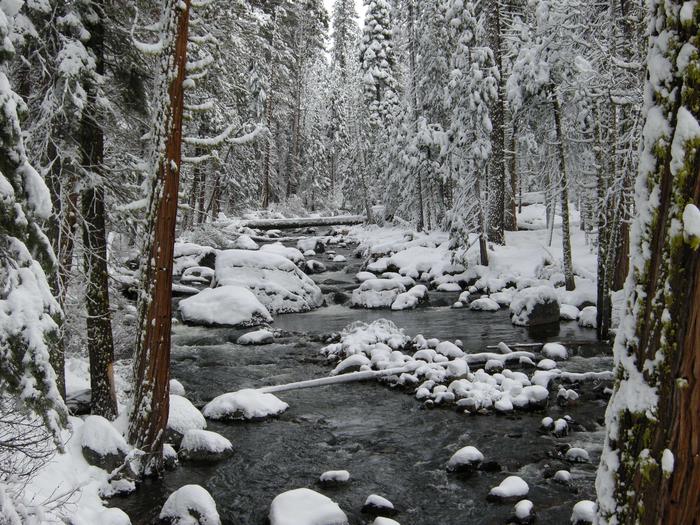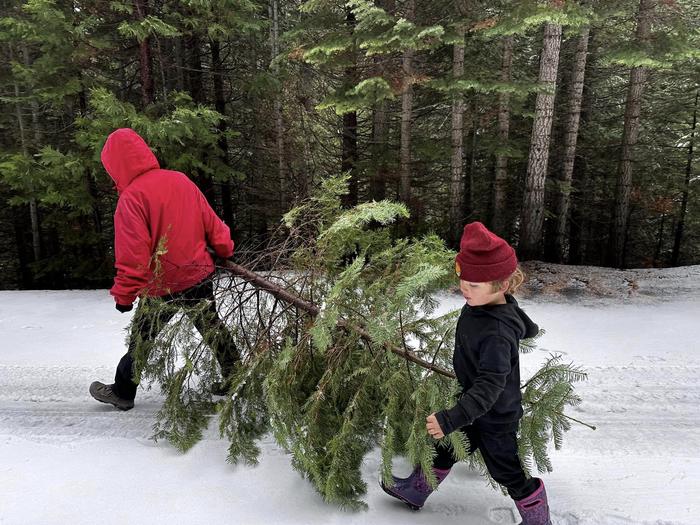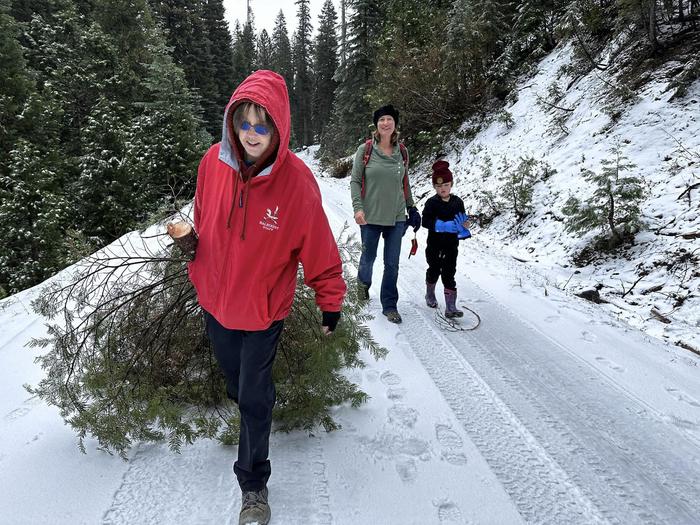Stanislaus National Forest Christmas Tree Permit
This permit allows you to cut a Christmas Tree(s) within designated areas of the Stanislaus National Forest! Begin the holiday season with an outing to cut the family tree. Christmas Tree Permits are being offered to the public in an effort to help reduce hazardous fuel ladders that have built up over years of fire suppression. Removal of excessive amounts of small trees from the forest will help create a healthier forest over time.
Lifelong memories are built during these special times and we are happy to help with any information needed to make this trip a safe and enjoyable one. Forest Service employees can provide valuable information about road and trail access and permissive cutting areas. Use this information to plan your trip and travel route.
A permit must be acquired and displayed on the vehicle dashboard for the tree(s) you are going to cut. There is a limit of one permit per Recreation.gov account, and the maximum purchase of two trees per permit.
Check out our Stanislaus National Forest - Home (usda.gov) for more information!
Visit 3 Forests Interpretive Association (3FIA) to purchase Forest Service maps or make a donation towards our interpretative programs. Three Forests Interpretive Association is a non-profit educational organization that helps to inform and educate visitors to California’s Stanislaus, Sierra, and Sequoia National Forests.
Need to Know
Selecting Your Tree
Tree Height: 20 feet maximum
Stump height: 12 inches maximum
Stump diameter: 6 inches maximum
Do not cut isolated trees growing in the open.
Select Pine, fir, or cedar. Do not cut any hardwood such as aspen or oak.
Take the whole tree of correct size for your home.
Do not cut a larger tree and remove the top of the tree.
If snow is on the ground, remove it from around the stump so you can accurately measure the stump and tree height.
Where to Cut Your Tree
Permits are non-transferable. No refunds. You must print your Christmas Tree Permit and have it displayed on your vehicle's dashboard when cutting and transporting your tree(s).
Permit holders are not to trespass onto private property when cutting their tree. Please do not cut within campgrounds, day use areas, trailheads, scenic pullouts, wilderness areas or special use permit areas.
Motorized vehicles are only allowed on existing roads and trails that are open to the public. No off-road travel is allowed (unless by snowmobile in open-riding areas). Refer to the Christmas Tree Cutting Map provided on this webpage.
Observe seasonal road closures and be prepared to hike to the cutting area to find a tree. On December 15 many forest roads are closed to motor vehicle use (MVU), please check the MVU map (MVUM).
Permit holders are reminded to park safely off the roadway and do not block gates.
Planning Your Trip
Helpful Cutting Tips
Carry your tree carefully out of the woods. Dragging the tree will rub off needles and bark.
Tools to bringing with you include a measuring tape; handsaw to cut your tree; gloves to protect your hands; boots to protect your feet; a tarp to sit on and/or to move your tree once it's cut; and rope or straps to secure your tree to your vehicle.
Choose a tree from a dense forested area, which will give the remaining trees more space to grow.
Cut the leftover branches from the stump and scatter them.
If storing your tree outside for a few days before putting it in the house, keep it in an area protected from the wind, such as the north or east side of your house or under a shaded tree.
How to Plan Your Trip
Before you leave home, be sure to measure the space where you plan to place the tree in your home (height and width), and measure the space in your vehicle where you will be transporting the tree.
Cell service may be spotty or unavailable. Be sure someone knows where you are and when to expect you back. Bring plenty of food and water with you as well as an overnight survival kit in case you become stranded. Start your day early. Be sure to find your tree and leave the woods before dark. Dress warmly and take extra dry clothes. Expect winter weather, including cold temperatures, snow and winds.
Check the latest weather conditions, forest warnings and road closures before you leave on your trip.
Bring a map with you. Don't rely on GPS because it may not be up-to-date with forest service roads.
Roads may not be plowed. Carry tire chains, shovel(s) and a tow chain. Bring a spare key and give it to someone else in your party. Don't get locked out of your car! Park in areas so that traffic can get by safely, and do not block gates. Be sure your vehicle has a full tank of gas.
We don't recommend bringing your pets but, if you do, they must be on a leash.


